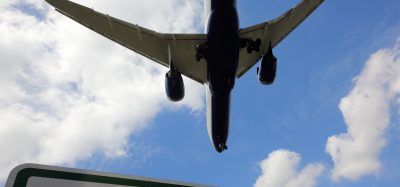Vienna International Airport prepares for the winter
- Like
- Digg
- Del
- Tumblr
- VKontakte
- Buffer
- Love This
- Odnoklassniki
- Meneame
- Blogger
- Amazon
- Yahoo Mail
- Gmail
- AOL
- Newsvine
- HackerNews
- Evernote
- MySpace
- Mail.ru
- Viadeo
- Line
- Comments
- Yummly
- SMS
- Viber
- Telegram
- Subscribe
- Skype
- Facebook Messenger
- Kakao
- LiveJournal
- Yammer
- Edgar
- Fintel
- Mix
- Instapaper
- Copy Link
Posted: 5 April 2010 | Vienna International Airport | No comments yet
Vienna International Airport is well equipped for the coming winter. In addition to roughly 500 employees who are prepared for any emergency, this ready-to-act status is supported by continuous contact with the weather service, runway and taxiway sensors and high-tech equipment.
2.3 million m2 must be kept free of snow and ice
Vienna International Airport is well equipped for the coming winter. In addition to roughly 500 employees who are prepared for any emergency, this ready-to-act status is supported by continuous contact with the weather service, runway and taxiway sensors and high-tech equipment.
All these preparations are important because a snowstorm with only five centimetres of accumulation means roughly 115,000 m3 of snow that must be cleared. About 64,000 m3 of snow must be taken off the runway system to prevent snowdrifts from building, and a further 51,000 m3 must be removed from the aprons. The docking positions are kept clear by loading the snow onto lorries with special equipment, and then transporting it to one of three large holding areas. In order to guarantee smooth operations, the aprons, taxiways and both runways – with a combined area of 2.3 million m2 – must be kept free of snow and ice. That compares with the space on roughly 320 football fields. Five centimetres of snowfall at the airport mean nearly 700 lorry runs for snow removal. This is the responsibility of the winter services and aircraft de-icing workforce, who operate under the motto: winter services make flight operations possible in spite of the weather.
A total of 244 Flughafen Wien employees have volunteered for this team, which is on call for winter services beginning on 1 November. At the touch of a button an alarm system notifies up to 70 employees, who are immediately available to clear key operating areas at the airport. The touch of another button can call up an entire shift. Under optimal con – ditions, a runway system with an area of approx. 500,000 m2 can be cleared in only 20 minutes. The density of the snow as well as the ground and surface temperatures determine how often the runways and taxiways must be cleared and de-iced. The time required to clear a runway depends on the makeup and weight of the snow cover. Flughafen Wien AG maintains continuous contact with the Austria Control weather service department. With the help of weather radar images and data from the black ice early warning system, the airport operations manager can identify changing weather conditions and alert the weather services team early on. A specially designed computerised measurement station continuously monitors the ground and air temperature based on the sensors in the runways and taxiways. This data is used to make decisions on the expected surface conditions – well-trained specialists can then identify black ice danger at the earliest possible time and start preventative de-icing.
In addition to the runways, aprons and taxiways, the aircraft must also be kept free of snow and ice. Roughly 250 Flughafen Wien employees have been trained for these jobs and use 14 vehicles to de-ice the planes according to a fixed procedure. It takes from five to ten minutes to de-ice an airplane, depending on its size and the thickness of the ice layer. The de-icing agents used at Vienna International Airport are biodegradable liquids. The required amount of de-icing fluid varies by the type of aircraft and weather conditions (frost, freezing precipitation with or without heavy surface cover). During the winter in 2008/2009 aircraft de-icing was carried out on a total of 143 days. The peak days were in January and February, when these services were required on a daily basis. Roughly 1.5 million litres of de-icing agents were used during that time.
This work is designed to ensure the smoothest possible flight operations, even under difficult conditions. The decision by Flughafen Wien AG to use volunteers for these services was based on two key factors: the know-how of colleagues who can rely on many years of experience with winter services at Vienna International Airport and thereby meet high quality standards as well as the safety aspect, which also speaks for the use of a specially trained apron and runway service team. Another key staff member is the mobile coordinator, who serves as an interface to the area managers: he takes over defective vehicles, contacts the repair shops and organises substitute equipment. The winter service team is well-trained and coordinated, and true to their motto: they make flight operations possible in spite of the weather! With their specialised know-how, Vienna International Airport sets an example for many other international airports through its winter services.


















